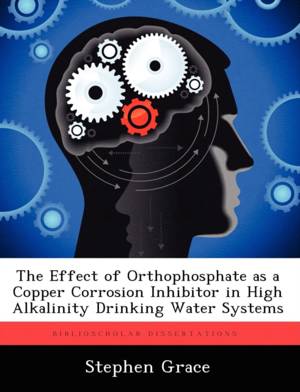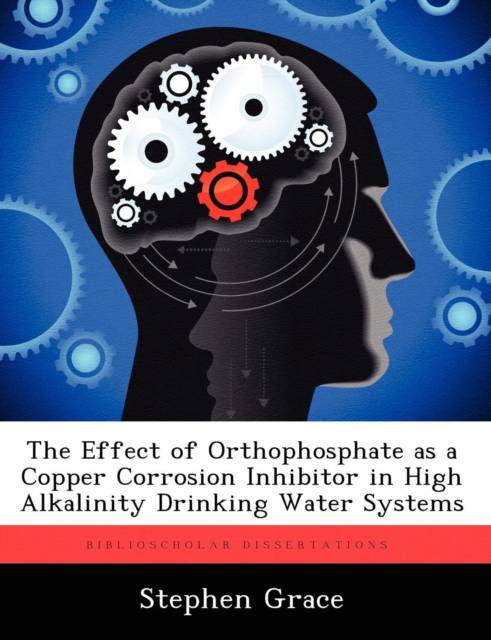
- Afhalen na 1 uur in een winkel met voorraad
- Gratis thuislevering in België vanaf € 30
- Ruim aanbod met 7 miljoen producten
- Afhalen na 1 uur in een winkel met voorraad
- Gratis thuislevering in België vanaf € 30
- Ruim aanbod met 7 miljoen producten
Zoeken
The Effect of Orthophosphate as a Copper Corrosion Inhibitor in High Alkalinity Drinking Water Systems
Stephen Grace
Paperback | Engels
€ 54,45
+ 108 punten
Omschrijving
The purpose of this research was to investigate orthophosphate as a corrosion inhibitor for copper pipe in a high-alkalinity drinking water system. Specifically, this thesis sought to answer three research questions regarding the impact of orthophosphate treatment, the nature of the mechanism by which orthophosphate controls copper corrosion, and the value of equilibrium modeling in predicting orthophosphate's effects. The research questions were answered through a comprehensive literature review and experimental methodology integrating laboratory jar tests, water sampling and analysis from a field investigation, qualitative solids analysis, and equilibrium model application. This study analyzed field data obtained over the course of a year from a high alkalinity water system into which orthophosphate was added to control copper concentrations. This field research generally supports results previously reported in the literature: in high alkalinity, neutral pH water, a dosage of 3 - 4 mg/L orthophosphate can reduce copper levels in a drinking water system from over 2 mg/L to below the 1.3 mg/L USEPA action level. While surface solid analysis did not provide conclusive evidence confirming the nature of orthophosphate's control mechanisms, jar tests and equilibrium solubility models were demonstrated to provide useful quantitative predictions of how orthophosphate reduces copper concentrations in various waters.
Specificaties
Betrokkenen
- Auteur(s):
- Uitgeverij:
Inhoud
- Aantal bladzijden:
- 100
- Taal:
- Engels
Eigenschappen
- Productcode (EAN):
- 9781249592532
- Verschijningsdatum:
- 9/10/2012
- Uitvoering:
- Paperback
- Formaat:
- Trade paperback (VS)
- Afmetingen:
- 189 mm x 246 mm
- Gewicht:
- 195 g

Alleen bij Standaard Boekhandel
+ 108 punten op je klantenkaart van Standaard Boekhandel
Beoordelingen
We publiceren alleen reviews die voldoen aan de voorwaarden voor reviews. Bekijk onze voorwaarden voor reviews.











